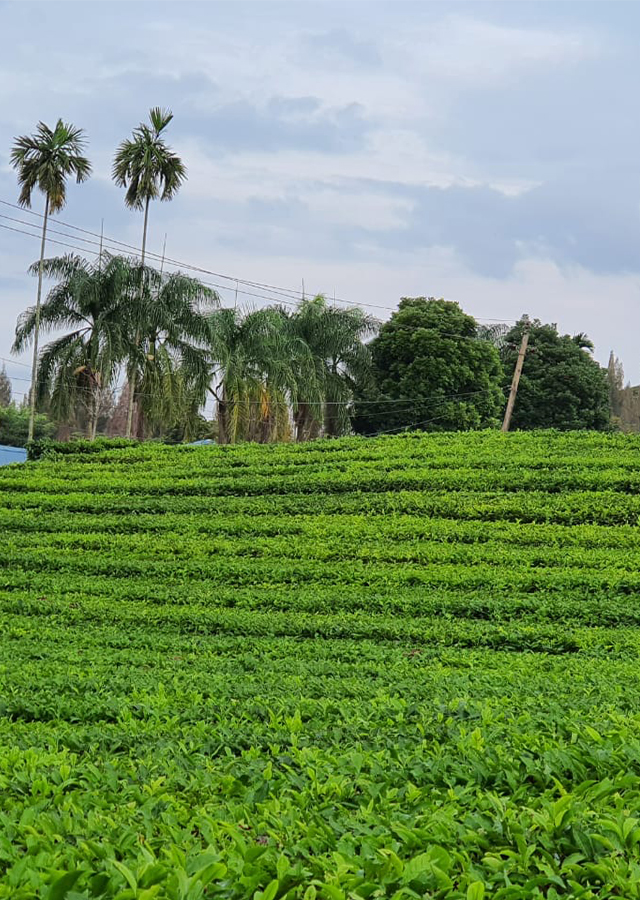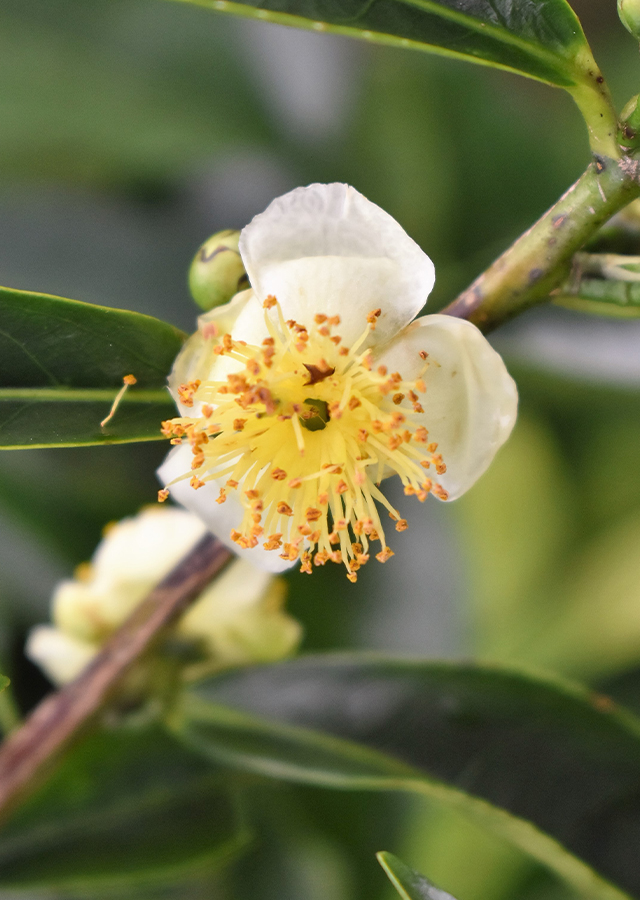Tea
Camellia sinensis (L.) Kuntze
Theaceae
Location in our garden
Principal



Synonym
Camellia arborescens Hung T.Chang, F.L.Yu & P.S.Wang
Camellia bohea (L.) Sweet
Camellia chinensis (Sims) Kuntze
Habitus
Shrubs. A perennial evergreen, multi-stemmed shrub growing up to 3 m tall or a tree that can reach 10-15 m tall with one main stem.
Part Used
Leaves
Roots
Growing Requirements
Full Sunshine
Habitat
Forest
Mountains
Overview
Tea is native to East Asia, the Indian Subcontinent and South-East Asia. The plant is cultivated across the world in tropical and subtropical regions. It has a history of culinary and medicinal use for the past 5,000 years. The name Camellia is taken from the Latinized name of Rev. Georg Kamel, SJ (1661–1706), a Moravian-born Jesuit lay brother, pharmacist, and missionary to the Philippines who were noted for his work on oriental plants. Specific epithet means Chinese. It is the second most consumed drink after water. The plant also has a wide range of other uses, as a source of oil, medicines, etc.
Vernacular Names
Cha (Chinese, Japanese, Thai), Teestruik (Danish), Arbre a the (French), Teestrauch (German), Chaa (Hindi), and Kamelia (Polish), Chai (Russia), Itye (Africa), Te (Italy), Teh (Indonesia).
Agroecology
Tea is widely cultivated in tropical areas for its leaves which are used to make China tea. Tea originated in an area of monsoon climates and mild winters. The plant can be grown at elevations from sea level to 2,300 m. Rainfall should not fall below 50 mm per month for any prolonged period. It prefers a woodland soil but thrives in a warm open well-drained loam if leaf mould is added. Prefers a pH of 4.5-5.6 (a calcifuge plant, preferring a pH between 5-7).
Morphology
- Branches - smooth.
- Buds - silky.
- Leaves - green, glossy, alternate, elliptic-oblong, 7.5 to 20 cm long, 3.5 to 6 cm wide, tapering at either end, with toothed margins.
- Flowers - white, about 3 cm in diameter, 7-20 petals/rays.
- Fruits - leathery, 3-celled capsule, each capsule containing a seed.
- Seeds - nearly spherical, obtusely angled, smooth, pale brown, about 2 cm in diameter.
Cultivation
Propagation is through seeds, cuttings (of almost ripe wood or of firm wood) and leaf- bud cuttings in a frame. Both wild and cultivated forms of tea plant are monoecious, insect-pollinated and self-incompatible.
Chemical Constituents
Flavanols (quercetin, kaempferol, myricetin, and their glycosides), polyphenols and catechins, alkaloids (caffeine, theophylline and theobromine), steroids, tannins, phenolic compounds, amino acids.
Traditional Medicinal Uses
- Prevents obesity and inflammation related disorders by enhancing the immune response.
- It has anti-cancer, anticarcinogenic, anti-inflammatory and positive effect on cardiovascular diseases, anti-angiogenic (prevention of tumor blood vessel growth) and anti-mutagenic properties, as well as also proved to be hypocholesterolemic and anti-atherosclerotic plaque forming.
- Anti aging-associated pathologies and neurodegenerative diseases such as Parkinson’s disease, Alzheimer’s disease and ischemic damage.
- Trials have shown that tea can be effective in the clinical treatment of amoebic dysentery, bacterial dysentery, gastro-enteritis, and hepatitis. It has also been reported to have antiatherosclerotic effect.
- Used internally in the treatment of diarrhoea, dysentery, hepatitis and gastro-enteritis.
- Applied externally, the leaves are used as a poultice or wash to treat cuts, burns, bruises, insect bites, ophthalmia, swellings etc.
- Teabags have been poulticed onto baggy or tired eyes, compressed onto headache, or used to bathe sunburn.
Part Used
Reference Sources
Namita, P, Mukesh, R and Vijay K.J. (2012). Camellia sinensis (Green Tea): A Review. Global Journal of Pharmacology 6 (2): 52-59.
North Carolina Plant Toolbox. (No date). Camellia sinensis. https://plants.ces.ncsu.edu/plants/camellia-sinensis/. (Accessed 10-12-2021).

